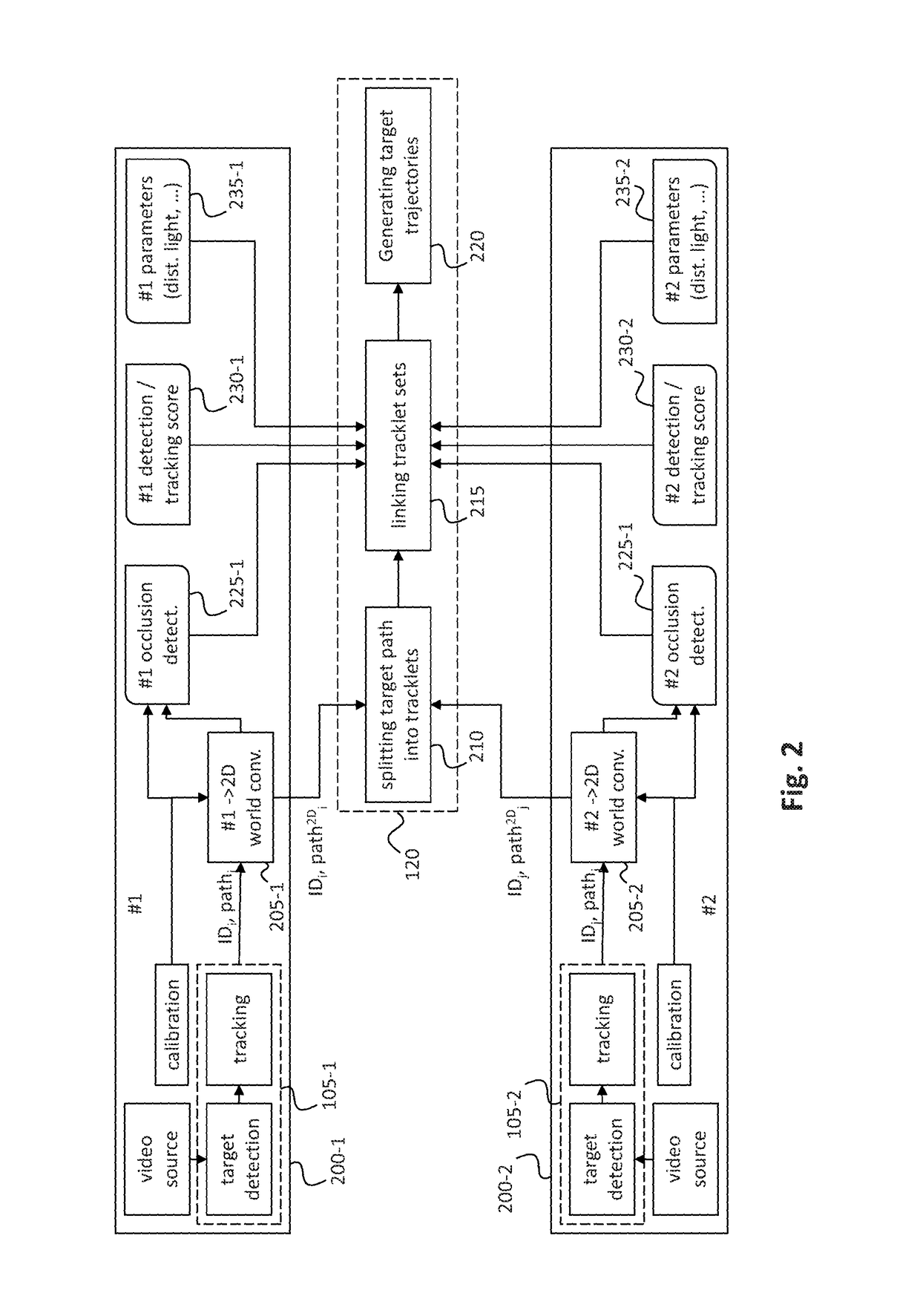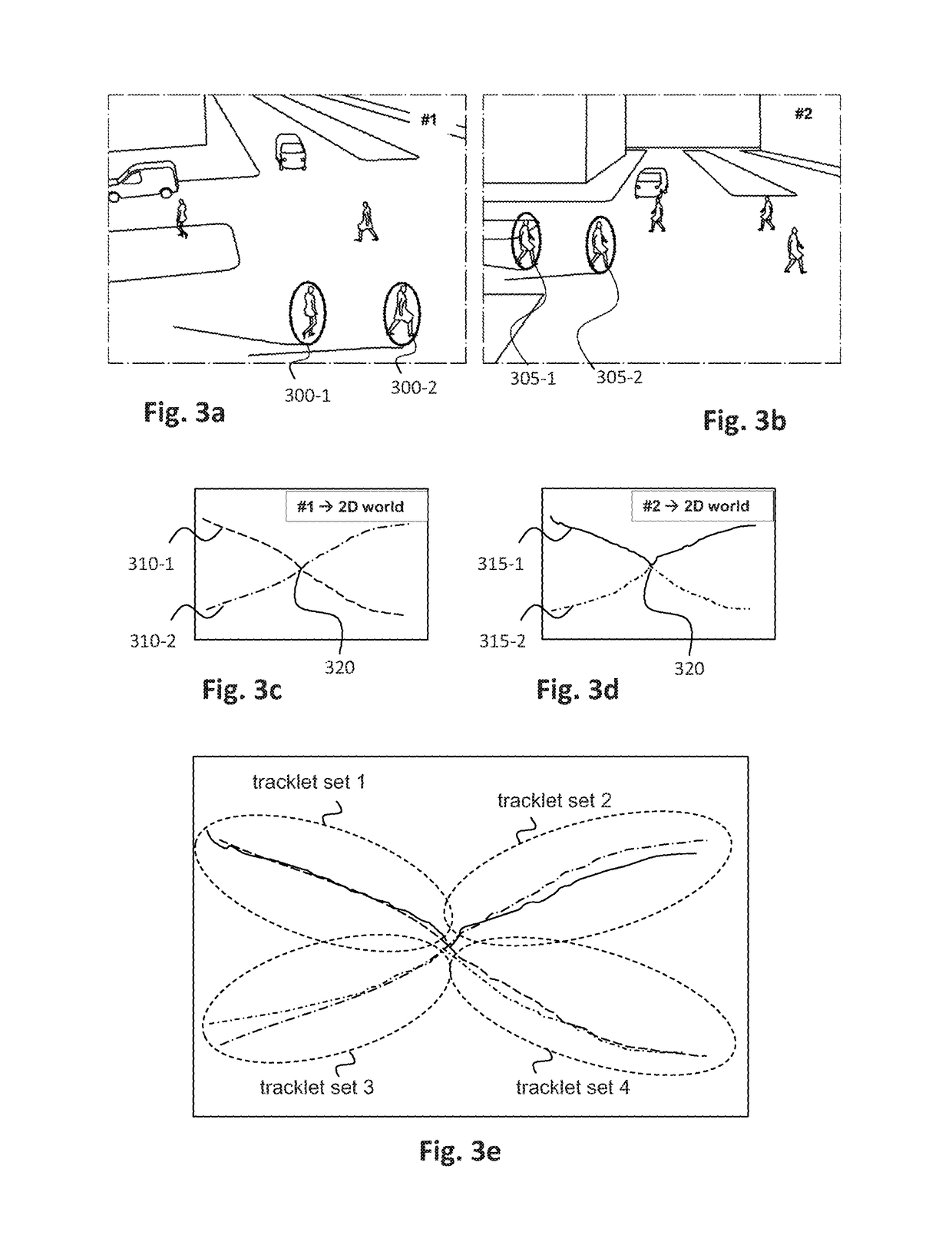Methods, devices and computer programs for tracking targets using independent tracking modules associated with cameras
a tracking module and target technology, applied in the field of video surveillance systems, can solve the problems of limited fraction of camera images that can be seen in real-time by humans, unavoidable tracking errors, poor performance, etc., and achieve the effect of reducing the consequences of calibration errors, robust calibration errors, and efficient image appearan
- Summary
- Abstract
- Description
- Claims
- Application Information
AI Technical Summary
Benefits of technology
Problems solved by technology
Method used
Image
Examples
Embodiment Construction
[0060]According to a general embodiment, the invention aims at taking advantage of the improvements that have been made in mono-camera tracking algorithms (or mono-camera trackers), in a fusion algorithm, for tracking targets based on images from several cameras. In other words, embodiments of the invention are based on the use of mono-camera tracking algorithms and on the use of results from these algorithms in a fusion algorithm.
[0061]Since it has been observed that image features are specific to each camera from which the corresponding image is obtained, data that are used in the fusion algorithm of embodiments of the invention are basically results from mono-camera tracking algorithms (and not the image features per se), that are less dependent on the characteristics of the cameras that are used.
[0062]According to particular embodiments, each target path generated by mono-camera tracking algorithms is split into several target path portions, called tracklets, one tracklet being ...
PUM
 Login to View More
Login to View More Abstract
Description
Claims
Application Information
 Login to View More
Login to View More - R&D
- Intellectual Property
- Life Sciences
- Materials
- Tech Scout
- Unparalleled Data Quality
- Higher Quality Content
- 60% Fewer Hallucinations
Browse by: Latest US Patents, China's latest patents, Technical Efficacy Thesaurus, Application Domain, Technology Topic, Popular Technical Reports.
© 2025 PatSnap. All rights reserved.Legal|Privacy policy|Modern Slavery Act Transparency Statement|Sitemap|About US| Contact US: help@patsnap.com



